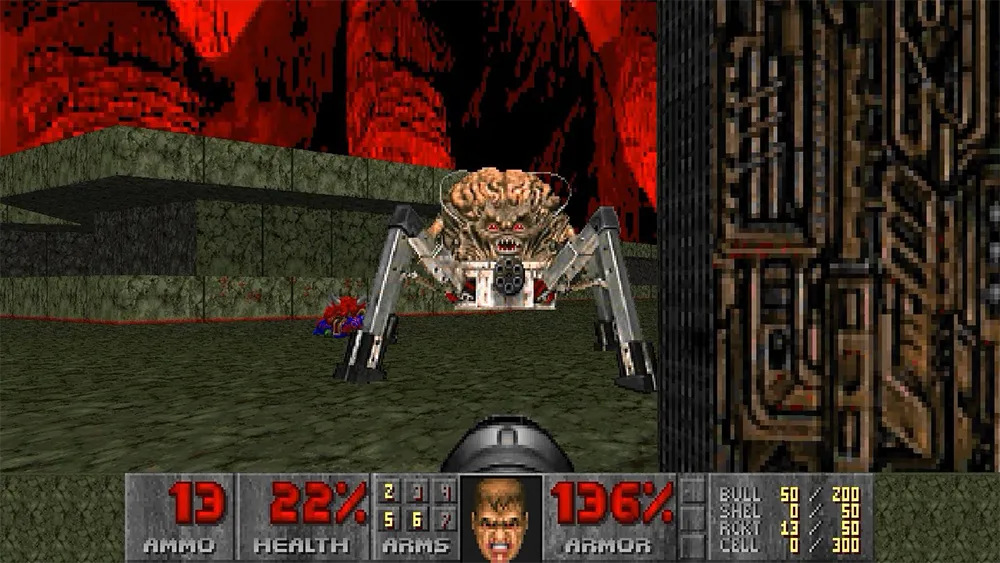Video games have come a long way throughout history. But not many games were able to influence the pop culture and the society for more than a generation, ahead of its time, and even influence the creation of similar games.
Doom, released in 1993, was a groundbreaking first-person shooter.
It was an instant classic, and was one of those games that played a pivotal role in shaping internet pop culture.
Fast forward to 2023, Doom is celebrating its 30th birthday, and during this moment, Doom designer John Romero and Doom lead programmer John Carmack were brought together.
And things get nostalgic.

"When people read anything, no matter the source, they will believe it." said John Romero on the subject of his relationship with John Carmack.
"For years, I thought that I had been born too late and missed out on participating in the heroic eras of computing," said Carmack. "Only much later did I realise that Romero and I were at the nexus of a new era - the 3D game hackers."
While the FPS genre can be traced back to Wolfenstein 3D in 1992, it was actually Doom that gets most of the credits.
Both games were created by id Software, which was founded by both John Romero, John Carmack, with game designer Tom Hall, and artist Adrian Carmack.

But Doom took Wolfenstein 3D, which laid the groundwork for the first-person shooter genre, to a whole different level with Doom.
In only one year, id Software made a lot of technological advancements,, adding multiplayer feature, introducing modding community, wider accessibility, and more.
It even enticed the developments of entirely new games using the Doom engine.

This approach influenced how players interacted with and contributed to the gaming experience, setting a precedent for collaborative creativity.
As a result, Domo created a cultural Impact, and became a cultural phenomenon.
Due to Doom's enormous success, the game was often cited as the most influential game in this FPS genre for years, and that the term "Doom clone" was used to designate this type of games.
In December of 1993, PC gaming was forever changed.
Doom literally killed side-scrolling 2D games, popularizing the genre to become not only the most sought-after games in the future, but also making it the benchmark of 3D computing.
"Everything we’d seen before Doom was 90-degree hallways," Romero said.
"Bard’s Tale, Dungeon Master – all these games did the same kind of thing. I still classify Wolfenstein 3D as a maze game, just like everything that came before it. Doom was the first to combine huge rooms, stairways, dark areas and bright areas, and lava and all that stuff, creating a really elaborate abstract world. That was never possible before."
"The way that Disney wants to delight their customers, I want to delight the player. I want them to have fun when they find things which they feel only they’ve discovered. Pacing is what’s really important. There’s fighting and then there’s exploration, and you usually aren’t doing them at the same time. When you’re killing stuff, the focus is on that. And then when that’s done, you can look around and go, ‘OK, where am I? How do I get to the next thing?’ A lot of my level design is about letting the player have those spaces to think, absorb the environment and try and figure things out, because that’s really fun," he added.
And unlike most games that came before it, the designers Romero, as the designer of Doom, got rid of lives and high scores.
He wants players to finish the game.
"We changed the rules of design," said Romero.
"Getting rid of lives, which was an arcade holdover that every game had; getting rid of score because it was not the goal of the game. We wanted to make it so that, if the player died, they’d just start that level over – we were constantly pushing them forward. The game’s attitude was, I want you to keep playing. We wanted to get people to the point where they always needed more."
Read: Scientists Are Teaching Artificial Intelligence To Kill Each Other In A Deathmatch

And not just that, because Carmack, who literally consumed an entire library of books on computer networking, worked on a computer code that would allow players to connect their PCs via modem to a local area network (LAN) and play in the game together.
"It was a high speed multiplayer death fest," explained Romero, who coined the term Deathmatch for the versus mode.
"I was just like, obviously this will be all-consuming. This is going to be the best game that has ever existed on the planet."
"I thought, this could really be the killer mode for any game, and it’s only going to get better because at that time, networking cards and cables were just barely being sold [...] This was the future."
Countless articles, even entire books have been written about Doom, how it was made, and its legacy.
From how the gameplay works, Doom was also unique because it was one of the earliest notable games to receive the "M for Mature" rating after Mortal Kombat in 1992.
Ever since 1993 players have been peering through the helmet of a lone space marine, stranded on Mars against the fearsome hordes of Hell as the last bastion of hope for humanity.
Today we PARTY! Share your memories, creations, cosplay, and fanart with us using #DOOM30 pic.twitter.com/JVTpdK3kx0— Bethesda (@bethesda) December 10, 2023
And in December 2023, the 3-decades-old game remains a brilliant, thrilling game experience.
In the first installment of Doom, player assumes the role of a space marine, later unofficially referred to as "Doomguy." the bulky character fights through hordes of undead humans and invading demons.
Player begins in one of Mars' moons. Doomguy was assigned there after assaulting a superior officer who ordered his unit to fire on civilians.
Player then progresses the game, before finishing it in hell.
From a mere chainsaw that can cut enemies in half, Doomguy later gets his hands on the the BFG 9000, short for "Big Freaking Gun" or, as some prefer, "Bio Force Gun," which can turn enemies inside out with its powerful energy blast.
the FPS game was so pure, so focused. Not a single pixel is wasted.
Doom kept this pace, without really exposing its limitations throughout the years, until Half-Life was introduced in 1998.
Coming from Valve, Half-Life was credited for introducing interactive first-person cinema, or something the original Doom could never do due to hardware limitation.